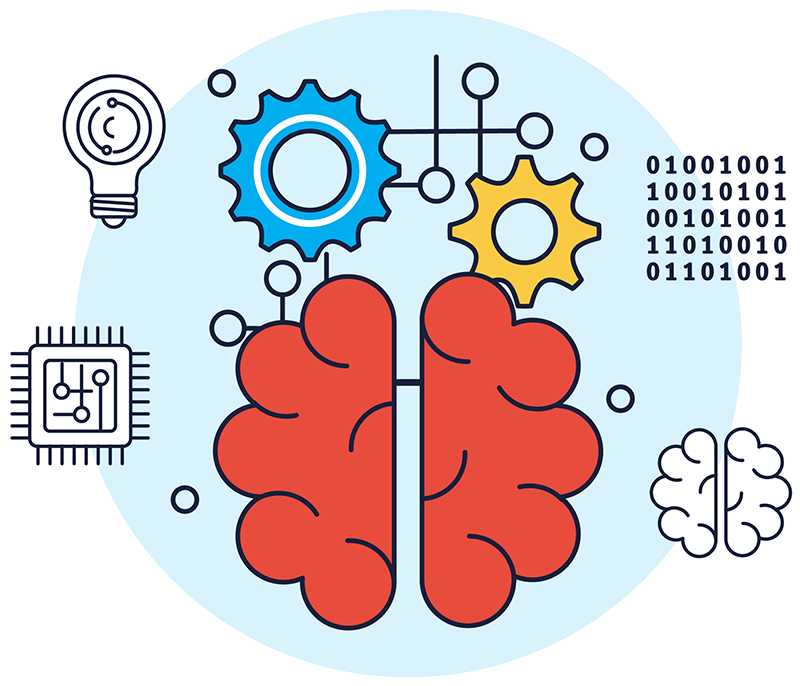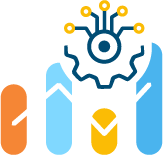
Emerging from artificial intelligence (AI), machine learning (ML) manifests a machine’s capacity to simulate intelligent human behavior. Yet, what tangible applications does it bring to the table? This article delves into the core of machine learning, offering an intricate exploration of the dynamic workflows that form the backbone of ML projects. What exactly constitutes a machine learning workflow, and why are these workflows of paramount importance?
Understanding Machine Learning
Machine Learning (ML) is a pivotal branch of AI and computer science. ML mimics the iterative human learning process through the synergy of data and algorithms, perpetually refining its precision. Positioned prominently within the expansive field of data science, ML deploys statistical methods to educate algorithms in making predictions and drawing insights within the data mining landscape. These insights, in turn, influence decision-making processes in applications and businesses, ideally fostering organic business growth. With the surge in big data, the demand for skilled data scientists has soared. ML emerges as a critical tool for pinpointing pivotal business questions and sourcing the pertinent data for resolution.
In the present era, data holds unprecedented value, functioning as a currency of immense significance. It plays a crucial role in shaping critical business decisions and providing essential intelligence for strategic moves.
Machine Learning's holistic approach
Frameworks guiding development
Unveiling the machine learning workflow
Machine learning workflows map out the stages of executing a machine learning project, outlining the journey from data collection to deployment in a production environment. These workflows typically encompass phases such as data collection, pre-processing, dataset construction, model training and evaluation, and ultimately, deployment to production.
The aims of a machine learning workflow
At its core, the primary aim of machine learning is to instruct computers on behavior using input data. Rather than explicit coding of instructions, ML involves presenting an adaptive algorithm that mirrors correct behavior based on examples. The initial steps involve project definition and method selection in framing a generalized machine learning workflow. A departure from rigid workflows is recommended, favoring flexibility and allowing for a gradual evolution from a modest-scale approach to a robust “production-grade” solution capable of enduring frequent use in diverse commercial or industrial contexts. While specifics of ML workflows differ across projects, the outlined phases – data collection, pre-processing, dataset construction, model training and evaluation, and deployment – constitute integral components of the typical machine learning odyssey.
Stages in the machine learning workflow
Data acquisition
The journey commences by defining the problem at hand laying the foundation for data collection. A nuanced understanding of the issue proves pivotal in identifying prerequisites and optimal solutions. For instance, integrating an IoT system equipped with diverse data sensors becomes imperative in a real-time data-centric machine learning endeavor. Initial datasets are drawn from many sources, such as databases, files, or sensors.
Data refinement
The second phase involves the meticulous refinement and formatting of raw data. Since raw data is unsuitable for training machine learning models, a transformation process is initiated, converting ordinal and categorical data into numeric features – the lifeblood of these models.
Model deliberation
The selection of an apt machine learning model is a strategic decision, factoring in performance (the model’s output quality), explainability (the ease of interpreting results), dataset size (affecting data processing and synthesis), and the temporal and financial costs of model training.
Model training odyssey
Model metric evaluation
Hyperparameter tuning
Hyperparameters wield the scepter in shaping the model’s architecture. Navigating the intricate path to discover the optimal model architecture is the art of hyperparameter tuning.
Model unveiling for predictive prowess
The grand finale involves deploying a prediction model. This entails creating a model resource in AI Platform Prediction, the cloud-based execution ground for models. Develop a version of the model and seamlessly link it to the model file nestled in the cloud, unlocking its predictive prowess.
Streamlining the machine learning journey through automation
Unlocking the full potential of a machine learning workflow involves strategically automating its intricacies. Identifying the ripe opportunities for automation is the key to unleashing efficiency within the workflow.
Innovative model discovery
Embarking on the journey of model selection becomes an expedition of possibilities with automated experimentation. Exploring myriad combinations of numeric and textual data and diverse text processing methods unfolds effortlessly. This automation accelerates the discovery of potential models, offering a quantum leap in time and resource savings.
Automated data assimilation
Effortlessly managing data assimilation empowers professionals with more time for nuanced tasks and paves the way for heightened productivity. This automation catalyzes refining processes and orchestrating resource allocation with finesse.
Savvy feature unveiling
The art of feature selection takes a transformative turn with automation, revealing the most invaluable facets of a dataset for the prediction variable or desired output. This dynamic process ensures that the machine learning model is armed with the most pertinent information, elevating its efficacy to unprecedented levels.
Hyperparameter optimization
The pursuit of optimal hyperparameters undergoes a paradigm shift with automation. Identifying hyperparameters that yield the lowest errors on the validation set becomes a seamless quest, ensuring the harmonious generalization of results to the testing set. This automated exploration of hyperparameter space becomes the cornerstone for elevating the model’s overall performance to new heights.
✔️ Machine Learning Operations (MLOps) refers to the practice of implementing the development, deployment, monitoring, and management of ML models in production environments. The ultimate goal of MLOps implementation is to make ML models reliable, scalable, secure, and cost-efficient. But what possible challenges are related to MLOps, and how do we tackle them? → https://hystax.com/what-are-the-main-challenges-of-the-mlops-process/




